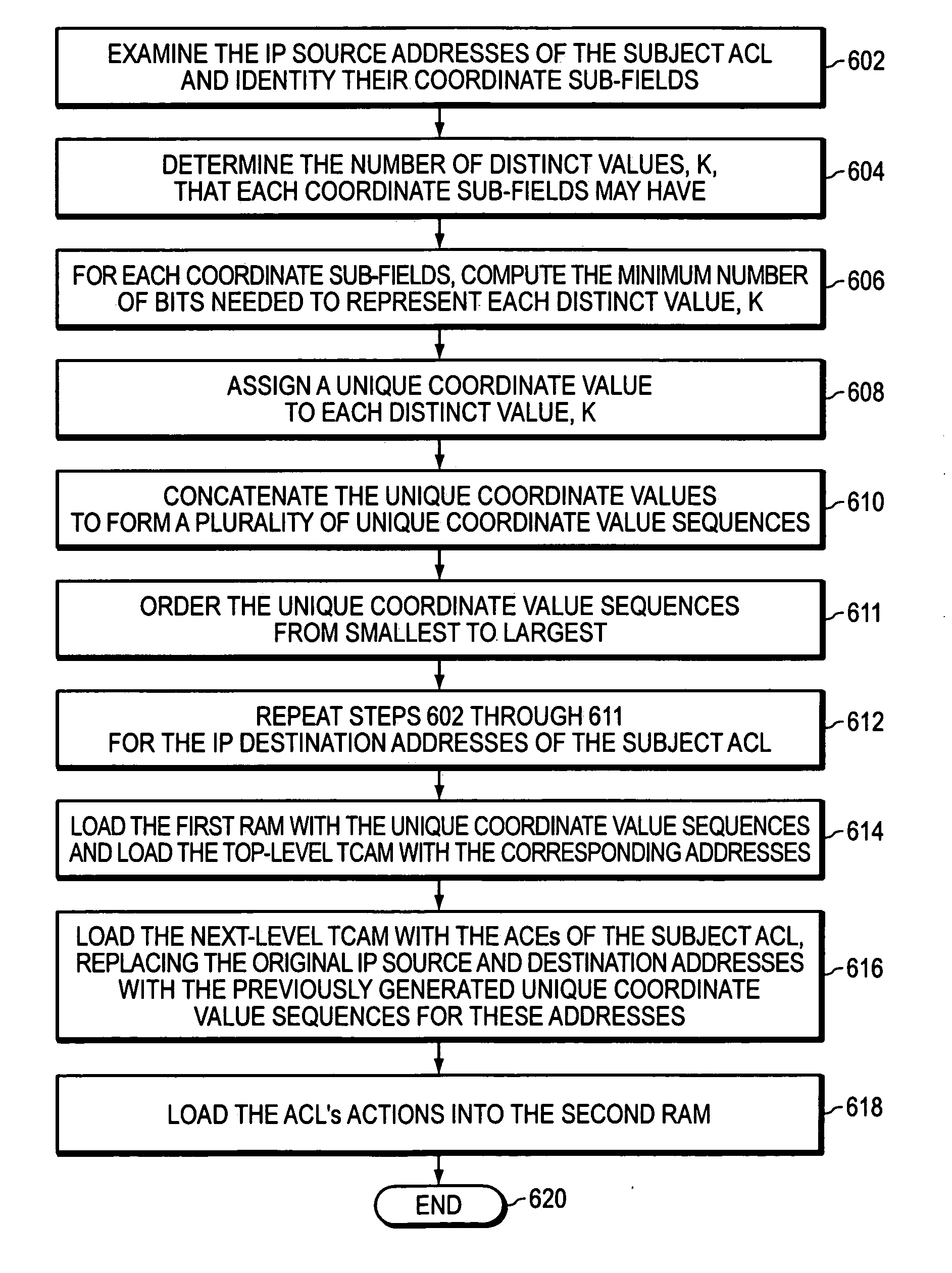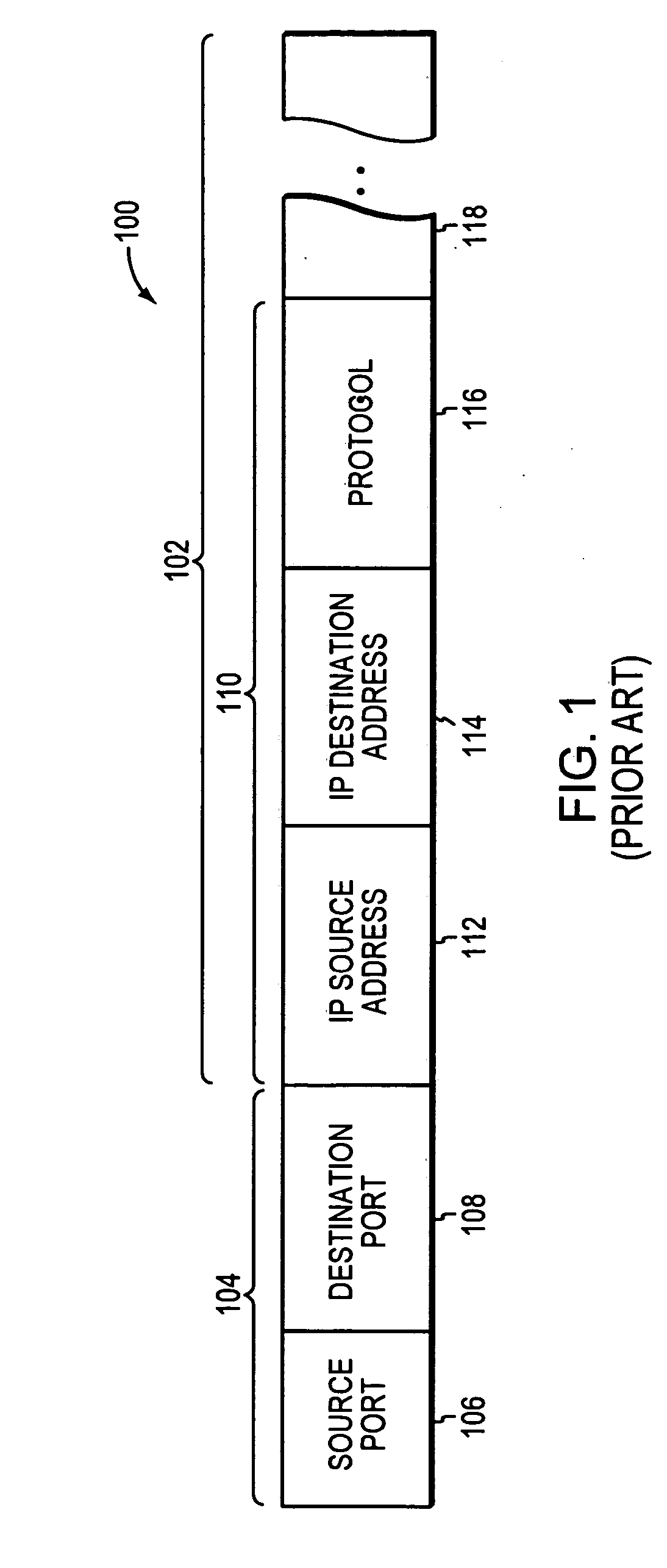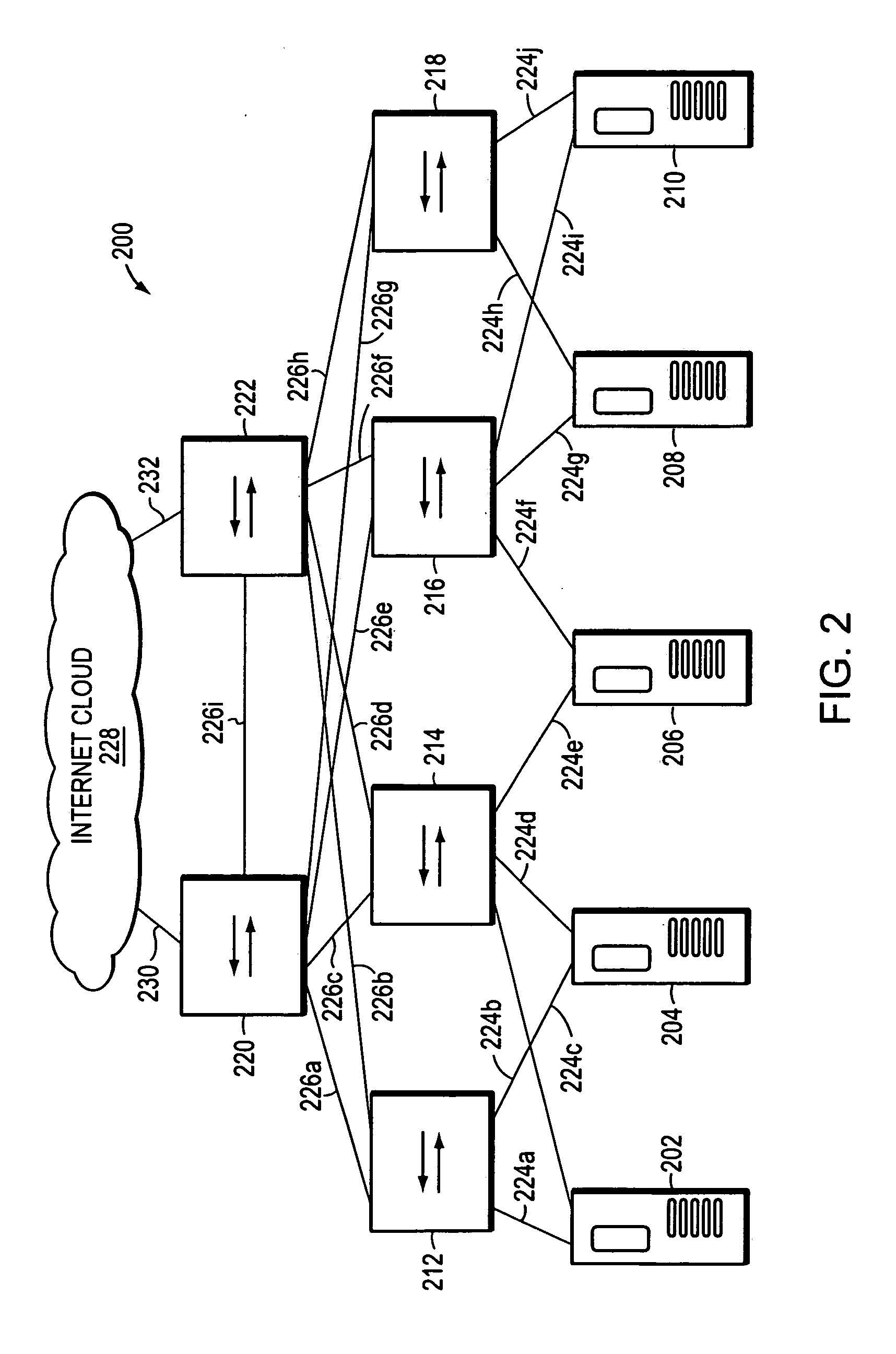Hierarchical associative memory-based classification system
a memory-based classification and hierarchy technology, applied in the field of computer networks, can solve the problems of significant degradation of intermediate device performance, degradation of performance, and likely to reach unacceptable levels, and achieve the effect of efficient classification of long strings
- Summary
- Abstract
- Description
- Claims
- Application Information
AI Technical Summary
Benefits of technology
Problems solved by technology
Method used
Image
Examples
Embodiment Construction
[0028]FIG. 2 is a highly schematic illustration of a computer network 200. The network 200 includes a plurality of servers 202-210 and a plurality of intermediate network devices 212-222, such as backbone routers, high-speed switches, etc. Each server 202-210 is preferably coupled to two or more of the devices 212-222 by respective trunks or links 224a-j. Server 202, for example, is coupled to device 212 by link 224a, and to device 214 by link 224b. The devices 212-222 are similarly interconnected with each other by another set of trunks or links 226a-i. Significantly, the network 200 is also coupled to the well-known Internet, which may be represented by an Internet cloud 228. In particular, device 220 is coupled to the Internet 228 by link 230, and device 222 is coupled to the Internet 228 by link 232. Accordingly, network 200 allows users (not shown) who may be coupled to Internet cloud 228 through other networks or connections, to access any of the servers 202-210 and retrieve i...
PUM
 Login to View More
Login to View More Abstract
Description
Claims
Application Information
 Login to View More
Login to View More - R&D
- Intellectual Property
- Life Sciences
- Materials
- Tech Scout
- Unparalleled Data Quality
- Higher Quality Content
- 60% Fewer Hallucinations
Browse by: Latest US Patents, China's latest patents, Technical Efficacy Thesaurus, Application Domain, Technology Topic, Popular Technical Reports.
© 2025 PatSnap. All rights reserved.Legal|Privacy policy|Modern Slavery Act Transparency Statement|Sitemap|About US| Contact US: help@patsnap.com



